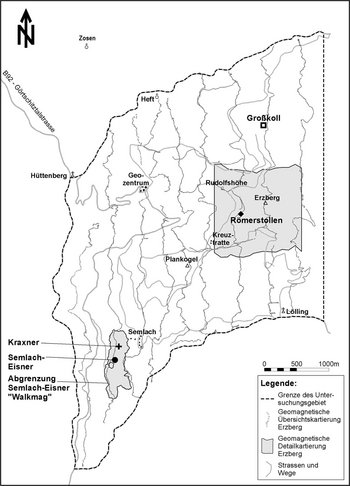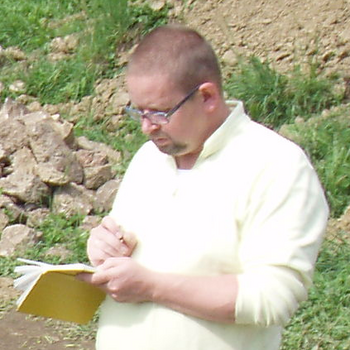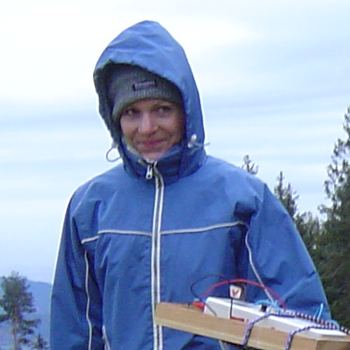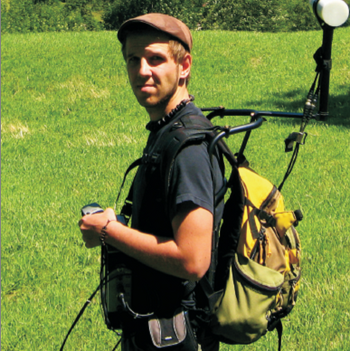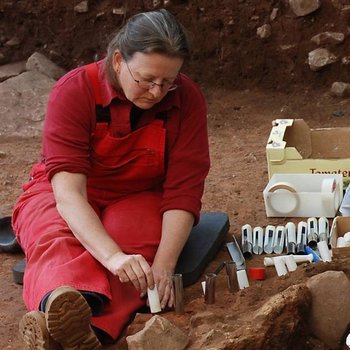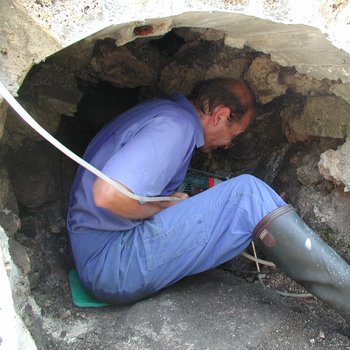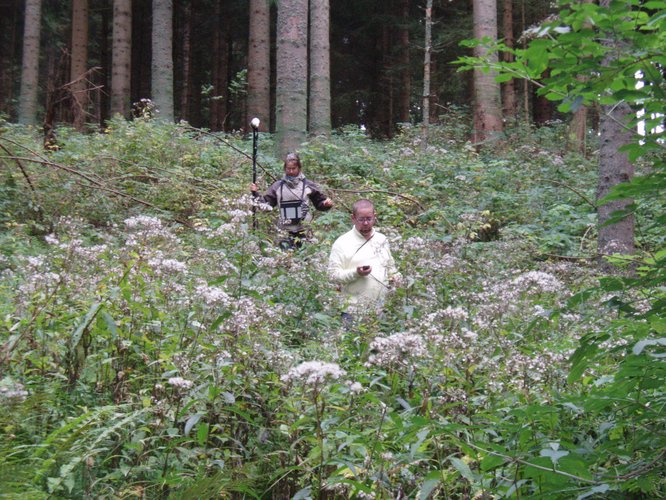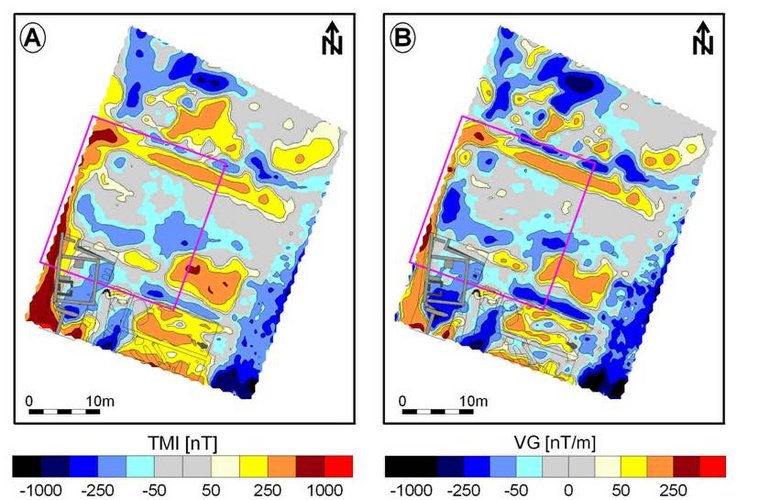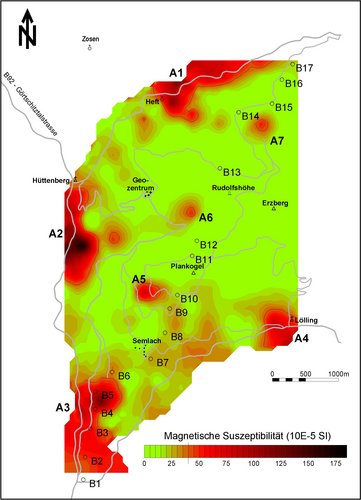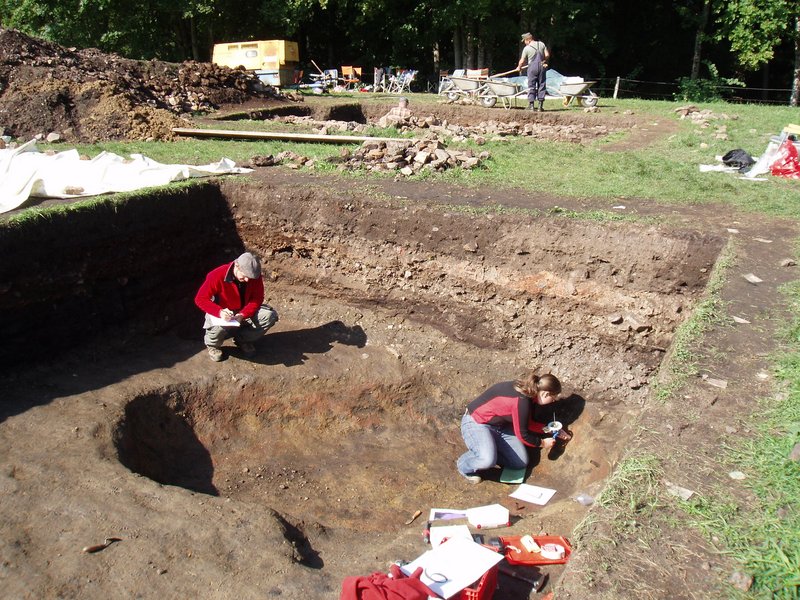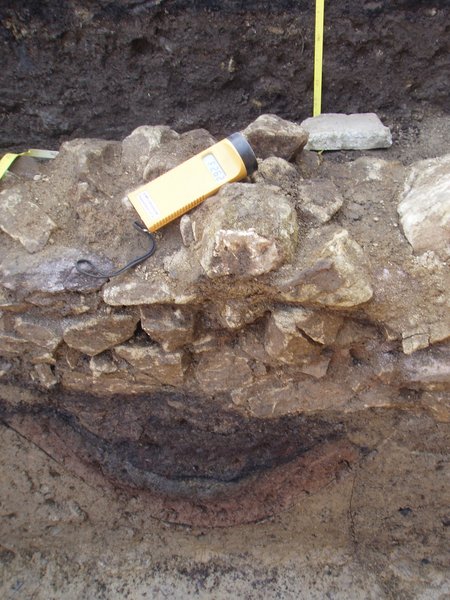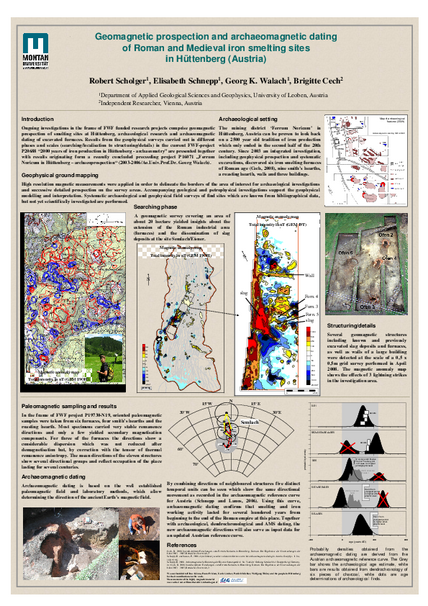The "Karth" - A Roman gold mining district in the Eastern Alps (Austria) FWF Project P 30790 (Brigitte Cech, 2018-2021)
The „Karth“ is a wooded plateau to the south-east of the town of Neunkirchen in southern Lower Austria. The still clearly visible remains of Roman gold mining are large reservoirs and leats, up to 25 km long aqueducts, that brought water to the mining fields. Mining placer deposits with the help of the power of water (hydraulic mining) is a typically Roman mining technique, that is described by Plinius the Elder in his Natural History.
The aim of the project is the interdisciplinary study of this unique site, which is the only Roman gold mine known in the Eastern Alps. Geophysical prospection of the reservoirs and the settlement sites not only serve the planning of the archaeological excavations but also help to understand sites that cannot be excavated. All in all, this interdisciplinary project yields substantial contributions to the knowledge of Roman hydraulic mining.
2000 years of iron production in Hüttenberg Archaeometric investigation of an ancient industrial site
FWF Project P20688-N19 (2008-2011)
The archaeometric investigations of the ancient mining region “Ferrum Noricum” involve a complex geophysical exploration of the smelting sites in the region of Hüttenberg together with archaeological examinations. Using geophysical prospection methods we discovered evidence of previously unknown potential archaeological find spots.
Project aims:
- Delimitation of the ancient industrial zone via geophysical surveying and subsequent detailed prospection of find spots
- Detection of historically transmitted smelting sites via systematic archaeometric and archaeological terrain investigations
- Determination of petrophysical parameters of rock samples and archaeological samples as basis for the geophysical models and interpretations
- Archaeomagnetic dating of smelting sites and ovens
Geophysical prospection
The combined interpretation of geophysical and archaeological information enables a detailed investigation of slag dumps and masonry far beyond the area of the excavation. Analyses of the magnetic anomalies and measurements of electric resistivity proved especially suitable. Measurements of electromagnetic conductivity were not successful due to the amount of slag pieces in the soil.
Magnetic characterisation of soils and rocks
Complementary to the geophysical surface measurements we conducted laboratory studies on soil samples and rocks which enable a differentiation between natural and anthropogenic magnetic minerals. On the basis of these results we were able to delimit several anomaly zones with an increased magnetic susceptibility of the soil, in which magnetic components of industrial origin predominate.
Archaeomagnetic dating
Archaeomagnetic dating uses the variation of the geomagnetic field in the time range of centuries to millennia for the dating of archaeological objects. New results from six melting furnaces, four smith’s hearths and one ore roasting hearth from the archaeological excavations in the area of Semlach/Eisner document the use as a melting spot and smelting site over a period of several centuries, for the whole Roman period.
Publications
Lafner, A. & Scholger, R. (2017): Gesteinsmagnetische Charakterisierung von Böden und Gesteinen am Hüttenberger Erzberg.- in: B. Cech (ed.) AUSTRIA ANTIQUA 6, Die Produktion von Ferrum Noricum am Hüttenberg Erzberg, p. 47-56, ISBN 978-3-902666-50-5, Uni-Press Graz Verlag, Graz.
Georg Walach (2017): Geophysikalische Prospektion am Hüttenberger Erzberg.- in: B. Cech (ed.) AUSTRIA ANTIQUA 6, Die Produktion von Ferrum Noricum am Hüttenberg Erzberg, p. 27-46, ISBN 978-3-902666-50-5, Uni-Press Graz Verlag, Graz.
Schnepp, E. (2017): Archäomagnetische Datierungen auf der Grabung Semlach/Eisner.- in: B. Cech (ed.) AUSTIRA ANTIQUA 6, Die Produktion von Ferrum Noricum am Hüttenberger Erzberg, p. 117-130, ISBN 978-3-902666-50-5, Uni-Press Graz Verlag, Graz.
Birch, T., Scholger, R., Walach, G., Stremke, F., Cech, B. (2013): Finding the invisible smelt: using experimental archaeology to critically evaluate fieldwork methods applied to bloomery iron production remains.
Archaeological and Anthropological Sciences, Vol. 7, 1: 73-87, Springer.
Walach, G., Scholger, R. & Cech, B. (2011): Geomagnetic and geoelectric prospection on a roman iron production facility in Hüttenberg, Austria. (Ferrum Noricum).
Archaeological Prospection 18, 2: 149-158, John Wiley & Sons, Ltd.
Patric Stückler (2010): Geophysikalische Prospektion im Raum der heimgesagten Sideritlagerstätte am Hüttenberger Erzberg. Masterarbeit Montanuniversität Leoben 2010.
(Masterarbeit Stückler 2010 als PDF)
Alexandra Lafner (2009): Magnetische Charakterisierung der Böden in der antiken Bergbauregion Ferrum Noricum (Raum Knappenberg/Kärnten). Masterarbeit Montanuniversität Leoben 2009.
(Masterarbeit Lafner 2009 als PDF)
Presentations
Birch, T., Cech, B., Scholger, R., Walach, G. Stremke, F. (2011): Finding the invisible smelt: using new attributes to find the furnace. Archaeometallurgy in Europe III, Bochum, Germany, 29.06.-01.07.2011. (abstract:) Metalla, 4, 237-238.
Scholger, R., Schnepp,E., Walach, G.K., Cech, B. (2010): Geomagnetic prospection and archaeomagnetic dating of Roman and Medieval iron smelting sites in Hüttenberg (Austria). 3. Mitteldeutscher Archäologentag, Halle (Saale), Deutschland, 07.-09.10.2010.
(Poster Archäologentag als PDF)
Stückler P. & Scholger R. (2010): Geophysikalische Prospektion im Raum der heimgesagten Sideritlagerstätte am Hüttenberger Erzberg. In: PANGEO 2010, Leoben, Austria, 15.-19.09.2010.
(abstract:) Journal of Alpine Geology, 52: 239, Leoben 2009
Walach, G.K. & Scholger, R. (2010): Geomagnetic and geoelectric prospection on a roman iron production facility in Hüttenberg, Austria (Ferrum Noricum). EGU General Assembly 2010. Vienna, 02.-07.05.2010.
(abstract:) Geophysical Research Abstracts, 12, EGU2010-8007
Walach, G.K. & Scholger, R. (2010): Geophysical prospection of subsurface monuments in a highly noisy environment. In: PANGEO 2010, Leoben, Austria, 15.-19.09.2010.
(abstract:) Journal of Alpine Geology, 52: 250-251, Leoben 2009
Scholger, R. & Lafner, A. (2009): Magnetic characterisation of soils in a historical mining district (Hüttenberg, Austria). IAGA 11th Scientific Assembly, Sopron, Hungaria, 23.-30.08.2009.
(abstract IAGA 2009)
Scholger, R. (2009): Archäometrie im Raum Ferrum Noricum – Hüttenberg. In: Verband Bergbau, Geologie und Umwelt, Jahrestagung 2009, St. Veit, Österreich, 12.-14.06.2009.
Schnepp, E.; Scholger, R. (2008): Archaeomagnetic dating of iron smelting kilns in Semlach, Knappenberg, Austria. - in: Early iron in Europe, prehistoric, roman and medieval iron production. Hüttenberg, Austria, 08.-12.09.2008.
Walach, G. (2008): Systematic geophysical survey on the site Semlach/Eisner, Hüttenberg, Carinthia, Austria. - in: Early iron in Europe, prehistoric, roman and medieval iron production. Hüttenberg, Austria, 08.-12.09.2008.
Walach, G.(2008): Result of geophysical survey in the "Ferrum Noricum" area, Hüttenberg, Carinthia, Austria. - in: Early iron in Europe, prehistoric, roman and medieval iron production. Hüttenberg, Austria, 08.-12.09.2008.
Walach, G.; Scholger, R.; Schnepp, E.; Cech, B.(2008): Geomagnetic prospection and archaeomagnetic dating of Roman and Medieval iron smelting sites in Hüttenberg (Austria). - in: PANGEO 2008. Wien, 22.-25.09.2008. (abstract:) Journal of Alpine Geology, 49, p. 116, Leoben 2008.
